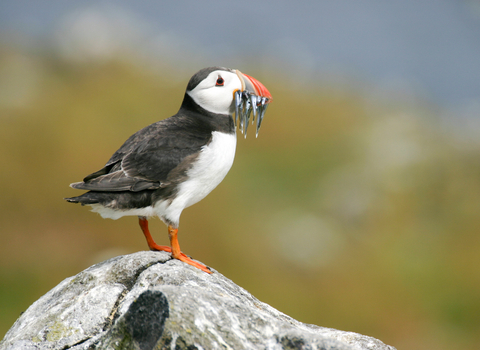
©Tom Marshall

©Mark Hamblin/2020VISION

©Rob Jordan/2020VISION

Puffin ©Alex Mustard/2020VISION

©Rob Jordan/2020VISION
Puffin
A funny little fellow in his glossy black dinner jacket and crisp white bib, the puffin is instantly recognisable from its brightly coloured parrot-like bill. Puffins use their colourful bill to attract a mate, the male with the brightest bill is considered the most handsome!
